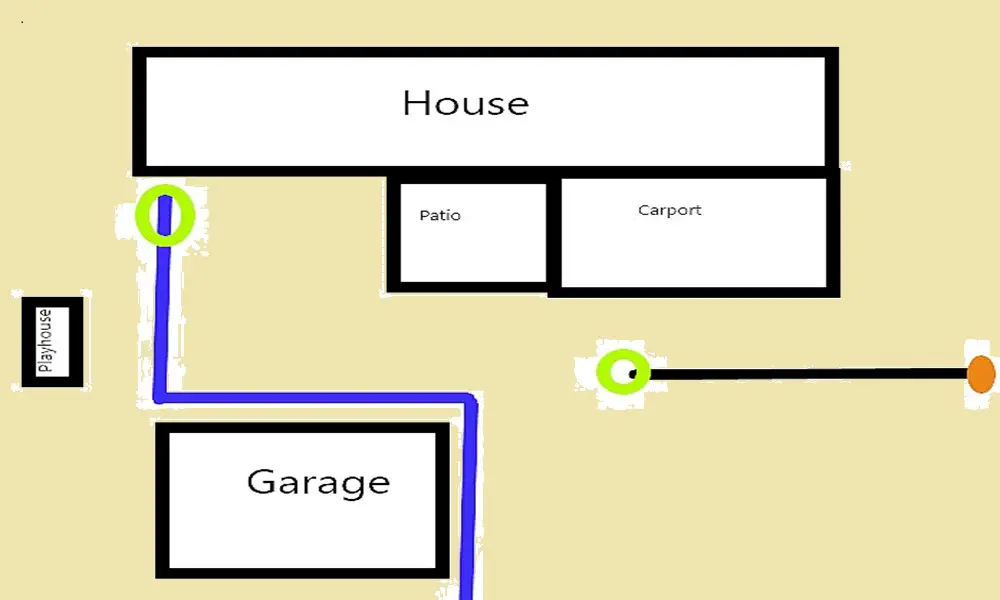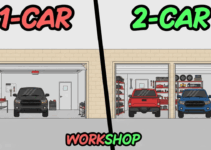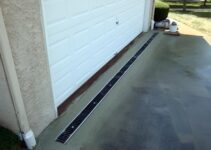What is a French Drain?
A French drain is a trench filled with gravel or rock and a perforated pipe that redirects surface and groundwater away from an area. This simple yet effective system is designed to prevent water accumulation around structures like foundations and basements, as well as in waterlogged areas of your yard.
The gravel or rock acts as a filter, allowing water to flow into the perforated pipe while keeping out debris that could clog the system. The pipe then channels the water away from the problem area, utilizing gravity to ensure efficient drainage.
French drains have been used for centuries and are named after Henry Flagg French, a lawyer and Assistant U.S. Treasury Secretary in the 19th century, who popularized the system in his book about farm drainage. These drains are versatile and can be adapted to various landscapes and drainage needs, making them a popular choice for homeowners and landscapers alike.
Importance of Proper Drainage
Proper drainage is crucial for maintaining the integrity and safety of any property. Without adequate drainage, water can cause significant damage to buildings and landscapes. Here are some key reasons why proper drainage is essential:
- Preventing Water Damage to Structures: Excess water around foundations can seep into basements and crawl spaces, leading to mold growth, wood rot, and structural damage. By redirecting water away from your home, a French drain helps protect your investment.
- Reducing Soil Erosion: Water that is not properly managed can wash away topsoil, leading to erosion and unstable ground. This not only affects the appearance of your landscape but can also pose a risk to the stability of structures and plant life.
- Maintaining a Healthy Landscape: Poor drainage can lead to waterlogged soil, which suffocates plant roots and can kill grass, flowers, and shrubs. Proper drainage ensures that plants receive the right amount of water, promoting a healthy and vibrant garden.
- Preventing Pests: Standing water is a breeding ground for mosquitoes and other pests. By ensuring water is properly drained, you can reduce the risk of pest infestations around your home.
Overall, implementing a French drain is a proactive step towards safeguarding your property from the harmful effects of excess water. Whether you’re dealing with a soggy yard or protecting your home’s foundation, a well-designed French drain can provide an effective and lasting solution.
Planning Your French Drain

Identifying Problem Areas
Look for areas where water tends to pool or where the ground remains soggy after rain. These are prime locations for installing a French drain.
Choosing the Right Location
Ensure the drainage point is lower than the area you’re draining to allow gravity to move the water. The end point should be a safe distance from your home or any other structures.
Gathering Necessary Materials
You’ll need a perforated pipe, gravel or rock, filter fabric, a shovel, and possibly a trenching tool if the soil is tough.
Step-by-Step Installation Guide
Digging the Trench
Digging the trench is the first and one of the most critical steps in installing a French drain. The trench should be about 6 inches to 2 feet deep and 1 to 2 feet wide, depending on your drainage needs. The depth and width will vary based on the volume of water you need to divert and the specific drainage requirements of your property.
- Mark the Path: Use stakes and string to outline the path of your trench. This will help keep your digging straight and ensure the trench follows the intended route.
- Ensure Proper Slope: The trench needs a slight slope (about 1% grade, or 1 inch per 8 feet) to facilitate water flow. This means the trench should gradually get deeper as it moves away from the area you’re draining. You can use a level to check the slope as you dig.
- Excavation: Use a shovel for soft soil or a trenching tool for tougher ground. Remove the soil carefully, placing it on tarps or in wheelbarrows to make it easier to refill the trench later.
Lining the Trench with Filter Fabric
Filter fabric is crucial as it prevents soil from clogging the perforated pipe, ensuring the longevity and efficiency of your French drain.
- Measure and Cut Fabric: Cut the filter fabric to fit the length and width of your trench. It should be wide enough to fold over the top of the gravel after the pipe is laid.
- Line the Trench: Lay the filter fabric along the bottom and sides of the trench. Ensure there are no gaps, and leave enough fabric on each side to fold over the top layer of gravel.
Adding Gravel or Rock
Gravel or rock provides a porous medium for water to flow through and supports the perforated pipe.
- First Layer of Gravel: Pour a layer of gravel or rock at the bottom of the trench, about 2 to 3 inches deep. This initial layer helps with water filtration and provides a stable base for the pipe.
- Level the Gravel: Use a rake to level the gravel, ensuring an even distribution across the trench.
Placing the Perforated Pipe
The perforated pipe is the core component of your French drain, directing water away from the problem area.
- Positioning the Pipe: Lay the perforated pipe on top of the initial layer of gravel. Ensure the perforations are facing down, as this helps maximize water intake while preventing debris from entering the pipe.
- Connecting Pipes: If your trench is longer than one pipe, connect multiple pipes using appropriate connectors. Ensure all connections are secure to prevent leaks.
Covering the Pipe with Gravel
Adding more gravel or rock on top of the pipe is essential to protect it and enhance the drainage system’s efficiency.
- Second Layer of Gravel: Pour additional gravel or rock over the pipe until it is completely covered. This layer should be about 2 to 3 inches thick.
- Fold the Fabric: Fold the excess filter fabric over the top of the gravel layer. This helps keep soil out of the gravel and pipe, maintaining the system’s effectiveness.
Filling the Trench with Soil
After the pipe is covered with gravel, the final step is to fill the trench with soil and blend it into your landscape.
- Backfill with Soil: Fill the remaining trench with the soil you initially removed. Compact the soil gently as you go to prevent future settling.
- Topsoil and Landscaping: Add a layer of topsoil on top, and reseed or landscape the area to match the surrounding yard. This not only improves aesthetics but also ensures the area remains functional.
Testing and Maintenance
Testing the Drainage System
Testing the system ensures that your French drain works as intended.
- Water Test: Pour water into the trench’s starting point and observe whether it flows smoothly through the pipe and exits at the drainage point. Adjustments may be needed if the water doesn’t flow properly.
Regular Maintenance Tips
Regular maintenance is crucial to keep your French drain functioning efficiently.
- Inlet and Outlet Checks: Regularly inspect the inlet and outlet of the drain to ensure they are not blocked by debris like leaves or soil.
- Gravel Inspection: Periodically check the gravel layer for any signs of clogging. If water pools on the surface, it may indicate the need for maintenance.
- Pipe Inspection: Use a garden hose to flush out the pipe occasionally to clear any accumulated debris inside.
By following these steps meticulously, you can ensure that your French drain remains an effective solution for managing excess water and protecting your property.
Read this:
Benefits of a French Drain
Preventing Water Accumulation
French drains are highly effective at redirecting water away from problem areas. By channeling water through a perforated pipe surrounded by gravel or rock, these systems prevent water from pooling on the surface and causing waterlogging or flooding. This is especially useful in regions prone to heavy rainfall or areas with poor natural drainage.
Protecting Foundations
Water accumulation around your home’s foundation can lead to serious structural issues. Moisture can seep into the foundation, causing cracks and weakening the structural integrity over time. French drains help to keep water away from the foundation, thereby preventing damage and maintaining the strength and stability of your home’s structure.
Reducing Soil Erosion
Uncontrolled water flow can erode soil, which is detrimental to both your landscape and the structural integrity of your property. French drains manage and redirect water flow, significantly reducing the risk of soil erosion. This is particularly important on sloped properties where water runoff can be especially problematic.
Enhancing Yard Aesthetics
Proper drainage not only prevents damage but also enhances the overall appearance and health of your landscape. Waterlogged areas can kill grass and other plants, leaving unsightly patches in your yard. By installing a French drain, you can ensure that excess water is effectively managed, promoting a lush, green, and healthy landscape that adds curb appeal to your property.
Common Mistakes to Avoid
Incorrect Slope
One of the most common mistakes in installing a French drain is failing to create the proper slope. The trench must have a consistent slope (approximately 1% grade) to allow gravity to move the water through the system. Without the correct slope, water will stagnate in the pipe or trench, defeating the purpose of the drain.
Inadequate Depth
Another frequent error is not digging the trench deep enough. The depth of the trench should be sufficient to handle the expected volume of water. If the trench is too shallow, it may not effectively divert the water, leading to continued water problems.
Poor Material Choices
Using low-quality materials can compromise the effectiveness and longevity of your French drain. It’s essential to use high-quality perforated pipes, durable filter fabric, and the appropriate type of gravel or rock. Inferior materials can lead to clogging, breakdowns, and the need for frequent repairs.
Conclusion
A French drain is a simple yet powerful solution for managing excess water around your property. By preventing water accumulation, protecting foundations, reducing soil erosion, and enhancing yard aesthetics, French drains offer numerous benefits. Proper installation involves careful planning, digging the trench to the right depth and slope, lining it with filter fabric, and using quality materials.
If you’re experiencing water problems around your home or yard, consider installing a French drain. It’s a practical and effective way to protect your property from water damage and improve the health and appearance of your landscape. Taking the time to install a French drain properly can save you from costly repairs and provide peace of mind knowing that your home and yard are safeguarded against excess water.
FAQs
What type of pipe is best for a French drain?
A perforated PVC or flexible corrugated pipe is commonly used for French drains due to its durability and flexibility.
How deep should a French drain be?
A French drain typically needs to be 6 inches to 2 feet deep, depending on the drainage requirements.
Can I install a French drain myself?
Yes, with the right tools and materials, installing a French drain is a feasible DIY project.
How long does a French drain last?
With proper installation and maintenance, a French drain can last 30 years or more.
Do French drains require maintenance?
Yes, regular maintenance is necessary to ensure the drain remains clear of debris and functions effectively.


